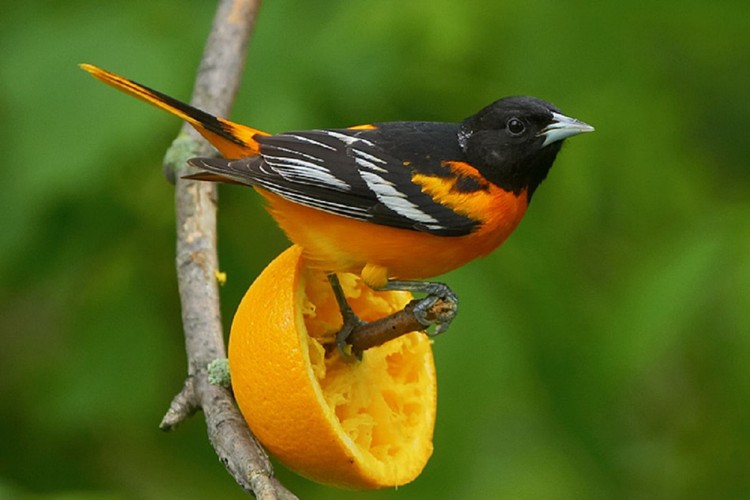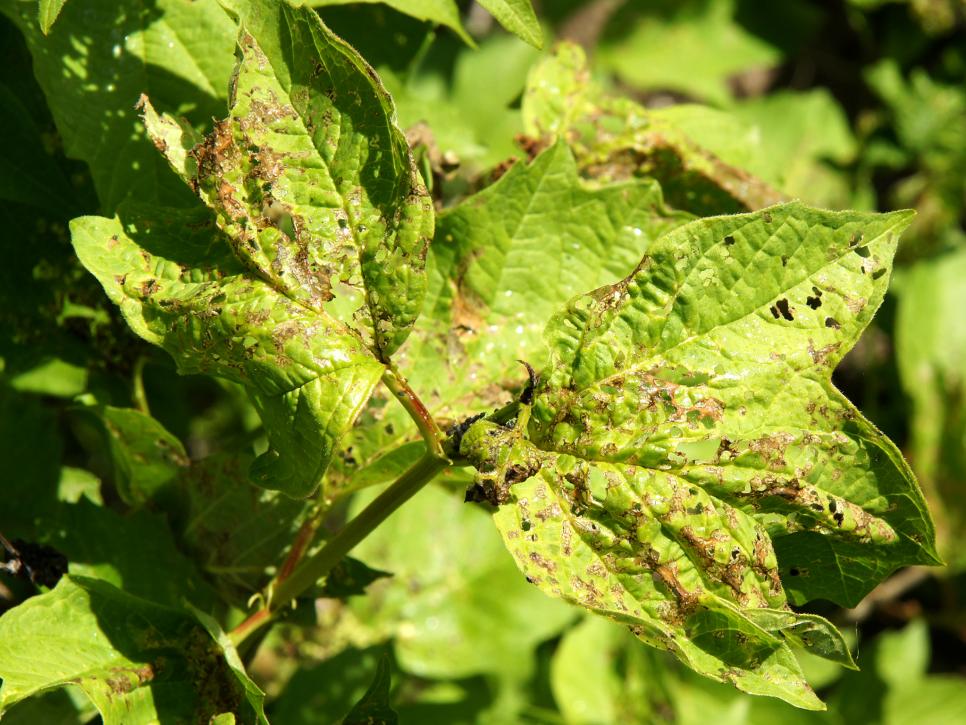There is nothing more beautiful than a basket full of homegrown peppers. Growing peppers in the garden will never really disappoint anyone. There are many reasons to love bell peppers besides their beauty. For starters, they are really easy to grow, loaded with nutrition, and taste amazing raw and cooked. If you’re a first-time gardener, peppers are a perfect way to start.

Bell peppers, also known as sweet peppers, can be red, yellow, orange, green, or even lavender and white. Bell peppers are the only members of the genus Capsicum that do not produce capsaicin, the extremely spicy chemical we are familiar with in hot peppers. Peppers are native to Mexico, Central America, and northern South America.
To grow this tender tropical warm season plant, you can start by planting the seeds indoors or buying plants after the risk of frost has passed. Only those who live in very hot climates like the south can start growing seeds outdoors.
Sowing pepper seeds indoors.
Starting with the seeds indoors will save you money and give you a head start in the growing season. This is particularly useful if you live in an area with a short growing season. The seeds should start about 8-10 weeks before the date of the last spring frost.
- Choose high quality organic seeds for best results.
- Fill small starter pots with organic potting soil. Biodegradable pots that can be planted directly into the ground are a great option.
- Place three seeds in each pot and cover with a light layer of soil.
- Place in a warm area with lots of light, the pepper seeds will germinate at 22 ° C and warmer.
- Keep the soil moist, but not saturated.
- Once the seedlings start to grow, stop paying attention to the weakest one and let the other two grow.
- Fourteen days before transplanting, begin to strengthen your plants. To do this, first water the plants and place them outdoors in a sheltered location.
- If you have a cold frame or an unheated greenhouse this works very well. Make sure to strengthen them on days when the temperature is stable.
- Leave your plants outside for two hours the first day, four hours the second day with more direct sun. Gradually increase the amount of time plants spend outdoors in direct sunlight.
- Do this for two weeks. You can leave the plants outside overnight only if there is no danger of frost.
- Add organic compost or aged compost to your garden soil a week before transplanting the pepper plants.
- Transplant the seedlings outdoors after all threat of frost has passed. The soil must be at least 18 ° C or the plants will not resist. If you need to heat your soil, lay a layer of black plastic for about two weeks before planting.
- Space the plants 18 to 24 inches apart, but keep the plants that shared a container close by so they touch.
- Put three matches in the hole with each plant and add a teaspoon of organic fertilizer. This will give the plants sulfur to help them grow.
- Once the peppers get their true leaves, fertilize weekly until the fruit appears. Water the peppers regularly but do not saturate them.
Home of pepper plants.
If you start with more mature pepper plants, place them 18 inches apart in garden soil that is rich in organic matter. Peppers also grow well in raised beds and containers. Add organic slow-release fertilizer to the hole when planting. To grow large, healthy peppers, plants need 6 to 8 hours of sunlight a day. Water the plants immediately and provide 1 to 2 inches of water per week, more if the weather is warmer. Feed the plants every three weeks after the fruit is laid with an organic fertilizer to promote growth. Mulch or straw around each plant to help retain moisture. Supports pepper plants as they grow.
Pepper harvest.
- Harvest the peppers as soon as they reach a good size.
- As the peppers stay on the vine, they become sweeter and also contain more vitamin C.
- Don’t pluck the peppers from the vine by hand, instead use sharp, clean scissors or a sharp, clean knife to remove the fruit from the plant.
Bell pepper storage.
- Place the peppers in a plastic bag and refrigerate for up to ten days after harvest.
- You can also dry the peppers in a conventional oven. First, wash the peppers and remove all the seeds. Cut them into 1/2-inch strips. Steam the strips for ten minutes and spread out on a baking sheet. Set the oven to 140 degrees and dry the peppers until they are brittle. Once the peppers are cool, place them in storage bags.
- Freezing bell peppers is also a great way to store your harvest. You can use them in soups and stews all winter long. Wash the peppers first and cut the stems. Cut the peppers in half and remove the seeds and membranes. Cut into strips or even dice and place on a cookie sheet. Place the baking sheet in the freezer for about an hour or until frozen. Place the frozen peppers in a freezer bag, removing as much air as possible.
Tips for Bigger, Tastier Peppers.
- Always choose high-quality pepper seeds and plants.
- Never plant seedlings in cool, moist soil. Peppers like heat.
- Fertilize with compost tea or fish emulsion for robust plants.
- Use a drip irrigation system for a regular supply of water.
- Pick out some of the first flowers.
- Remove all suckers.
- Remove the grass around the pepper plants regularly.
- For larger fruits, spray the plants with a mixture of one tablespoon of Epsom salts in one gallon of water once when the plants are in bloom and once every ten days thereafter.
- To keep the new seedlings warm, place a cage around them and wrap the plastic around the cage. This creates a mini greenhouse.
Health benefits of bell peppers.
Although we often think of peppers as vegetables, they are actually a fruit. The nutritional value of bell peppers depends on the color you choose. A red bell pepper, for example, contains more than eight times the amount of vitamin A as a green bell pepper.
All peppers contain a large number of antioxidants. One bell pepper contains twice the recommended daily allowance of vitamin C and lots of vitamin B6.
Other vitamins and nutrients in bell peppers include:
Vitamin B1.
Vitamin B2.
Vitamin B3.
Vitamin E.
Vitamin K.
Manganese.
Magnesium.
Phosphorus.
Potassium.
Molybdenum.
Fiber.
Carotenoids – Red bell peppers get their beautiful color from a special antioxidant known as lycopene. This carotenoid helps fight free radicals from toxins. Research has shown that lycopene can help prevent certain types of cancer, including the prostate, lungs, and stomach. The carotenoids found in yellow and orange bell peppers help protect against cardiovascular disease.
Fact: A 2008 study found that steamed peppers improved their “bile acid binding ability.” This results in less recirculated bile acids, better use of cholesterol, and less fat absorption, which reduces the risk of heart disease.
Bell Peppers are a Great Source of Potassium – All bell peppers are a great source of potassium. Potassium is an essential balancing mineral that helps regulate blood pressure and muscle function.
Bell peppers also contain fiber that helps regulate cholesterol and aids in digestion, as well as folic acid that is essential for the function of red blood cells.








